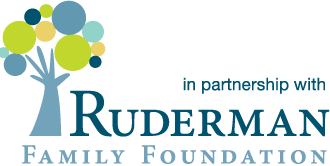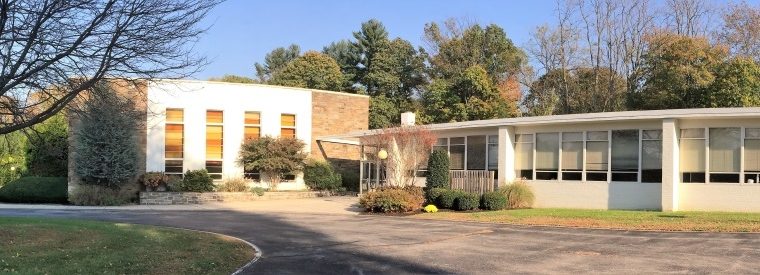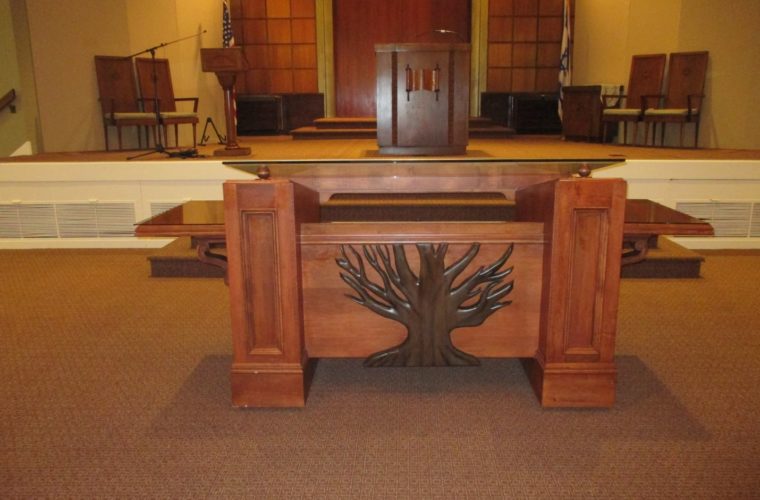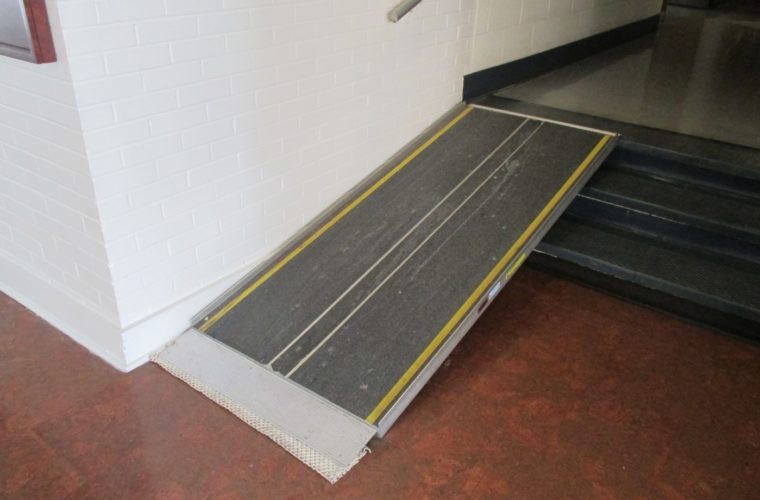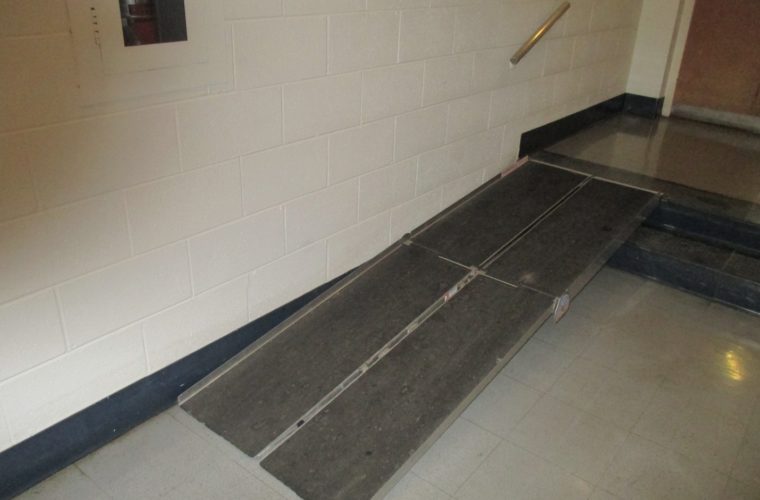Areas of Inclusion: Religious School
About the Congregation
8201 High School Road
Elkins Park, PA 19027
Number of Congregants: 185
Contact Information
Joel Fishbein
Barry Boise
Inclusion Programming
Does this congregation have an inclusion committee?
Yes
Developing Our Program
In many ways, our journey began with an individual student: Adam Fishbein. Adam was diagnosed at a young age with Tourette Syndrome, ADHD and anxiety. Adam struggled in our Religious School, and through his own advocacy and that of his parents, we found ways to meaningfully include and accommodate Adam. These included welcoming Adam to present about his disabilities alongside members of the Tourette Association of America, giving Adam unique roles in our congregation that allowed him movement and autonomy, educating his teachers about his needs, and ultimately, helping him reach confirmation by Skpe, while he was enrolled in a residential treatment program.
We learned through Adam that open dialogue about disabilities and flexibility in our classrooms not only supported Adam and his family, but enriched our congregational life. This led to the important decision to make inclusion broad and programmatic.
Number of people involved in the effort: In some ways, our entire congregation is involved in our inclusion effort, as we have surveyed the full congregation twice to determine first, our needs, and next, our impact, and we voted to adopt an Inclusion Statement and establish an Inclusion Committee.
Day-to-day, at least 20 individuals with special needs and their families reap the benefits of our inclusion policies and practices. The committee is led by two individuals, one of whom is the parent of a child with special needs. Other members provide input in planning. In a synagogue of our size, these 20 families represent more than 10 percent of our membership.
Involving People with Disabilities
In our planning stage, we realized two important things: 1) we could not assume a congregant did not have a disability; and 2) we did not yet understand the needs within our congregation. We knew some families might not be forthcoming about a child’s disability until we provided a more disability-friendly space, and that some disabilities are invisible. Thus, we decided to survey the entire congregation in 2012, and re-surveyed our full membership in 2014. Our response rate was very high: 79 percent of families with email responded to the first survey; only 44 percent responded to the second, which we believe is evidence our program is working.
Through the first survey, we learned that our needs were not just in education, but applied also to making our services more accessible. In 2015, we launched a series of annual conferences to discuss LGBTQ inclusion in the mishkan, and learned how critical the synagogue could be in creating a home for people who are often marginalized due to their sexuality. In many ways, this was like learning the impact we could have on a child marginalized due to a disability. We can become an accepting home to a person and change their life.
Funding This Effort
The costliest part of our inclusion program was installing a new sound system for the hearing impaired, and that was funded out of our capital budget. In September, 2011, we were invited to be one of four synagogues in the Lasko Synagogue Inclusion Network for People with Special Needs and Their Families, and the invitation included a $750 grant. We received this invitation after completing an extensive application process. Along with the money, the grant came with many opportunities that we took for professional development and increased awareness of inclusion issues. The invitation letter is attached.
Helpful Agencies & Organizations
We participated in Jewish Learning Ventures’ annual Opening the Gates to Torah inclusion conference each year, and accessed the resources compiled by Shelley Christianson, who is considered the mother of Jewish inclusion.
These resources helped us understand how other synagogues were addressing disabilities inclusion and offered us a format to get started with our efforts. We also took advantage of the learning opportunities accompanying our invitation to the Lasko Synagogue Inclusion Network for People with Special Needs and Their Families.
Spreading Awareness About Our Work
Once we adopted our inclusion policy, we notified the entire congregation through email and newsletter articles. Our Religious School enrollment forms make parents aware of support for student with disabilities and ask to see their 504 or IEP plans.
Recognizing the need for a broader definition of inclusion, we engaged the larger community in addressing not only special needs inclusion but also LGBTQ inclusion by hosting two award-winning, community-wide conferences in concert with JFCS. We promoted this event through networking and public relations. This marketing raised awareness among even those who could not attend our conferences.
In 2017, for the first time, we celebrated Jewish Disability & Inclusion Month Shabbat and both our Rabbi and a special guest speaker spoke about inclusion at Kol Ami.
Process & Sharing
Evidence of Successful Inclusion Efforts
Our second survey asked members whether they felt their inclusion needs had been addressed. In the first survey, sound and lighting had been the top identified barrier to participation. We addressed those issues almost immediately. Our members answered the second survey with a resounding ‘yes.’
Before we created our inclusion initiative, parents were seldom sharing their children’s needs with us. Now, between two and six families share IEP and 504 plans with us each school year. Our Religious School serves less than 70 children in grades K-10 each year, so this is a significant number of students.
Each year, we query Religious School parents of children with special needs about their level of satisfaction with the program, and to date, we have only received positive responses.
We have hired a congregant who is a psychologist to teach some of our youngest Religious School students, and he has proved instrumental in reaching kids who learn differently and helping them embrace their Jewish education.
We have also since created a Hebrew High School for 11 and 12 graders. Their curriculum includes assisting in our Religious School. One student is assigned as a special mentor for children with special needs, and this has proved gratifying for this older student and supportive for their charges.
A new member who uses a wheelchair for mobility has joined the congregation, and attends services regularly, sings in our Adult Choir, and is an integral member of our community.
Evidence of Changing Attitudes
We never made this a focus until the inclusion committee raised awareness of the clergy and the congregation alike. Many in our congregation had implicit bias which labeled many with disabilities as other and impacted their access to meaningful participation in our community. These attitudes have been transformed, first around special needs and more recently, our eyes have been opened about the need to not simply tolerate, but to embrace our LGBTQ brethren.
Our rabbi now regularly addresses implicit bias, acceptance and barriers to entry in his sermons. Removing these barriers has been transformative for our congregation where members now consciously think about these issues.
We hope to communicate more fully about disabilities inclusion on our website and in our invitations to synagogue events.
We are in the midst of a rabbinic search. Access to your materials and seminars will support our new rabbi, future presidents and board members, and our existing leadership and educators in staying current and adopting best practices for inclusion.

